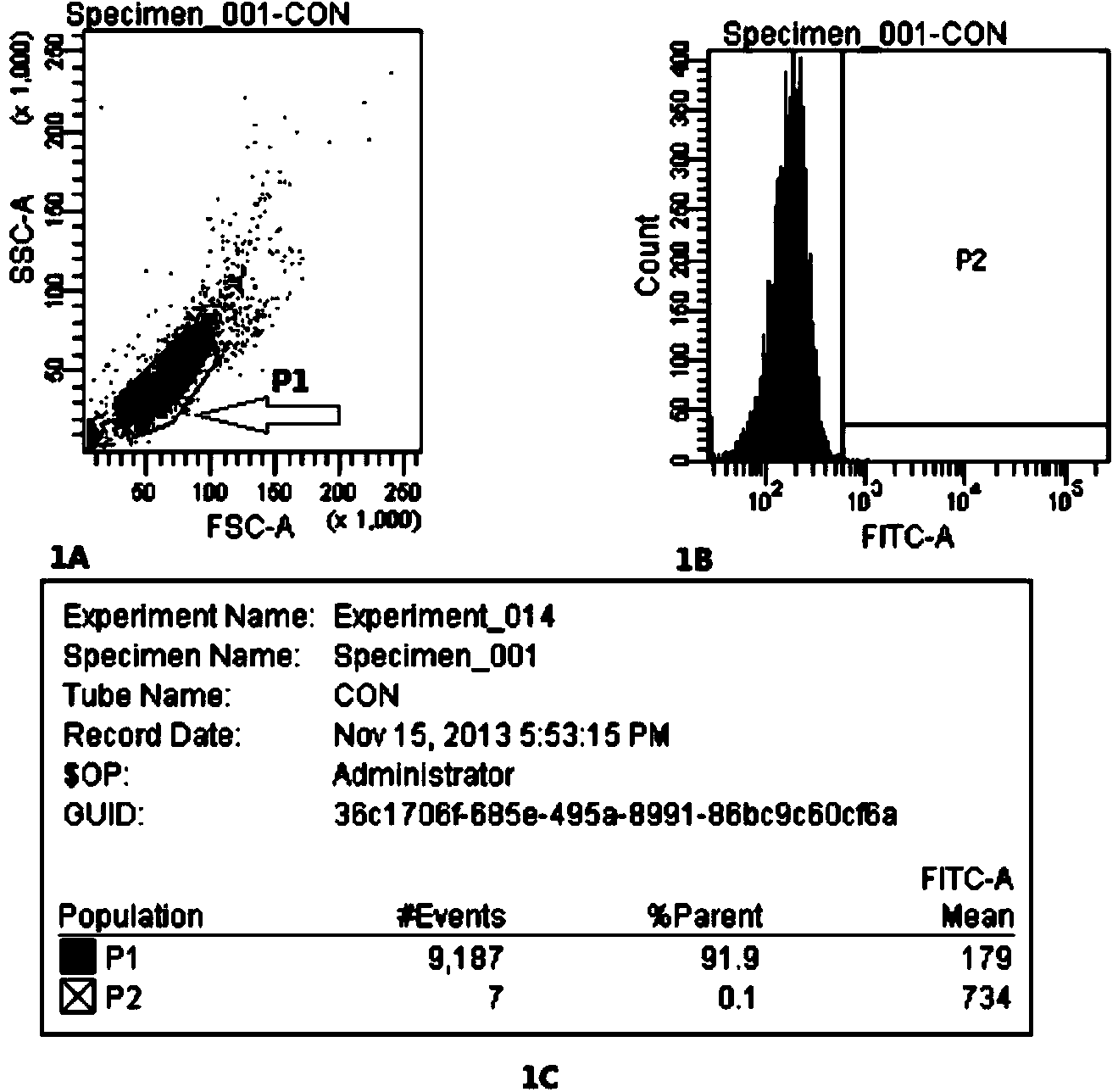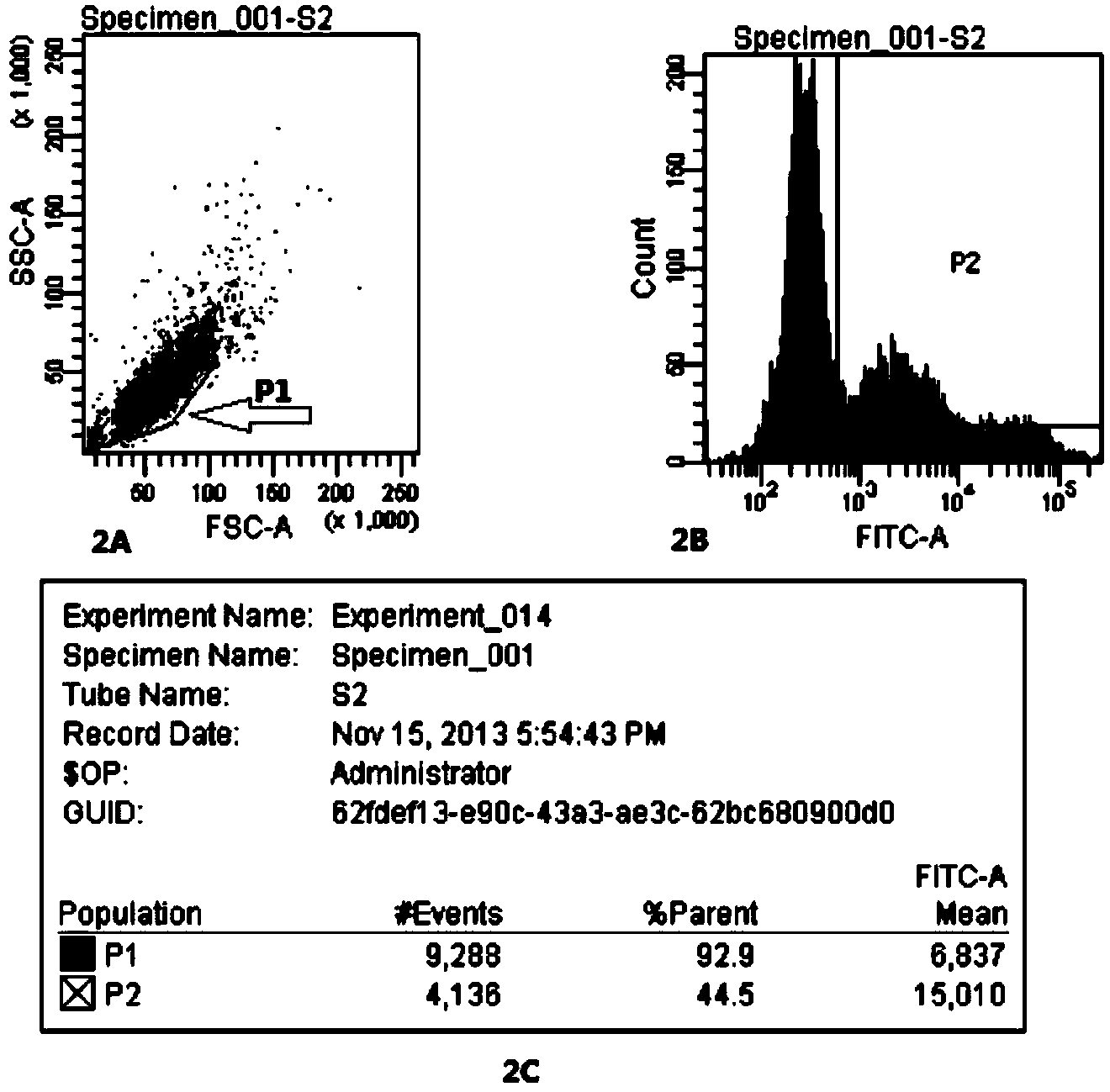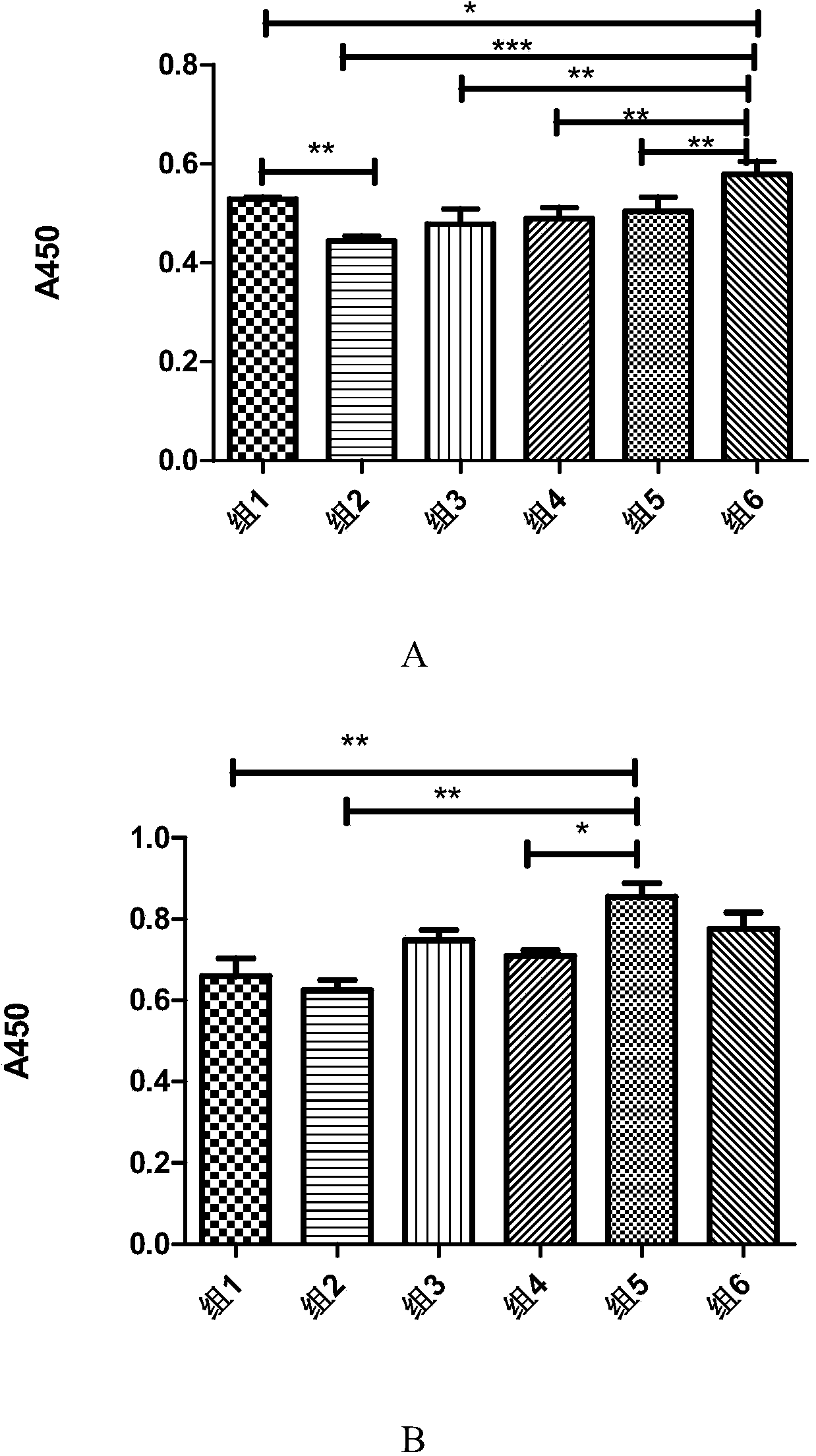Radiotherapy-targeted sensitizer and application thereof
A technology of radiotherapy and sensitizers, which is applied in gene therapy, antineoplastic drugs, DNA/RNA fragments, etc., can solve the problems of tumor cell radiotherapy resistance, trouble radiotherapy effect, and no reports, so as to improve radiotherapy sensitivity and radiotherapy Effect of increased sensitivity, good economic and social benefits
- Summary
- Abstract
- Description
- Claims
- Application Information
AI Technical Summary
Problems solved by technology
Method used
Image
Examples
Embodiment 1
[0034] Example 1 Screening of radiotherapy difference miRNAs
[0035] 1.1 Culture of Hep-2 stem cells
[0036] Prepare serum-free medium (SFM): add 5 μl each of EGF and bFGF to 5 ml of DMEM / F12 culture medium at a volume ratio of 1000:1.
[0037] Human laryngeal carcinoma epithelial cells Hep-2 in the logarithmic growth phase were resuspended in SFM medium to make 10 cells 3 cell suspension per ml, at 25cm 2 Routine culture in cell culture flasks, i.e. vertically place the culture flasks in an environment containing 5% CO 2 In a cell culture incubator at 37°C, shake several times a day. Observe the formation of microspheres under a microscope. In the ultra-clean bench, change half of the medium every 2 days, that is, discard half of the SFM medium, add an equal amount of fresh SFM medium, and pass on every 6 days. The number of cells is 1:3. Add the culture medium in a 1.5ml centrifuge tube, collect the microspheres by centrifugation at 4°C, 1000g, 4 minutes, digest with t...
Embodiment 2
[0062] Example 2Hep-2 cell transfection and transfection rate determination
[0063] 2.1 Transfection of miRNA in Hep-2 cells
[0064] 2.1.1 Radiotherapy targeted sensitization group preparation: Taking 24-well cell culture plate as an example, (1) the 7 kinds of oligonucleotides synthesized in Example 1 were prepared in a mass ratio of 1:1:1:1:1:1 :1 After mixing, samples with a total mass of 0.33 μg, 0.67 μg, and 1 μg were prepared, dissolved in 2.1 μl, 4.2 μl, and 6.3 μl of DEPC water in turn, and then 22.9 μl, 20.8 μl, and 18.7 μl of RPMI1640 culture solution were added , make a final volume of 25 μl RNA dilution, and let it stand at room temperature for 5 minutes; (2) Mix 2 μl of Entranstr-R with 23 μl of RPMI1640 culture medium to make a final volume of 25 μl of Entranstr-R dilution, and let it stand at room temperature Set aside for 5 minutes; mix equal volumes of the RNA diluent prepared in (1) and (2) and the Entranstr-R diluent to make 50 μl sensitizer transfection ...
Embodiment 3
[0074] Example 3 Analysis of biological characteristics of Hep-2 cells after radiotherapy
[0075] 3.1 Radiotherapy of Hep-2 cells after transfection
[0076] With 6 groups of Hep-2 cells in Example 2 (group 1 is transfection 50nM sensitizer group, group 2 is transfection 100nM sensitizer group, group 3 is transfection 150nM sensitizer group, group 4 is transfection The nonsense miNA group, group 5 was the transfection PBS group, and group 6 was the non-transfection blank group) received radiotherapy immediately, the conditions were 6MV-X-ray vertical irradiation, the total dose was 400cGy, the dose rate was 200cGy / min, and the single dose The irradiation field was 200cGy, and the irradiation field was 20cm×20cm. During irradiation, the surface of the culture plate was covered with 1.5cm tissue-equivalent filler, and the source-to-skin distance (SSD) was 100cm. Irradiate once at intervals of 48 hours, and irradiate twice in total.
[0077] 3.2 Hep-2 cell proliferation experi...
PUM
 Login to View More
Login to View More Abstract
Description
Claims
Application Information
 Login to View More
Login to View More - R&D
- Intellectual Property
- Life Sciences
- Materials
- Tech Scout
- Unparalleled Data Quality
- Higher Quality Content
- 60% Fewer Hallucinations
Browse by: Latest US Patents, China's latest patents, Technical Efficacy Thesaurus, Application Domain, Technology Topic, Popular Technical Reports.
© 2025 PatSnap. All rights reserved.Legal|Privacy policy|Modern Slavery Act Transparency Statement|Sitemap|About US| Contact US: help@patsnap.com



